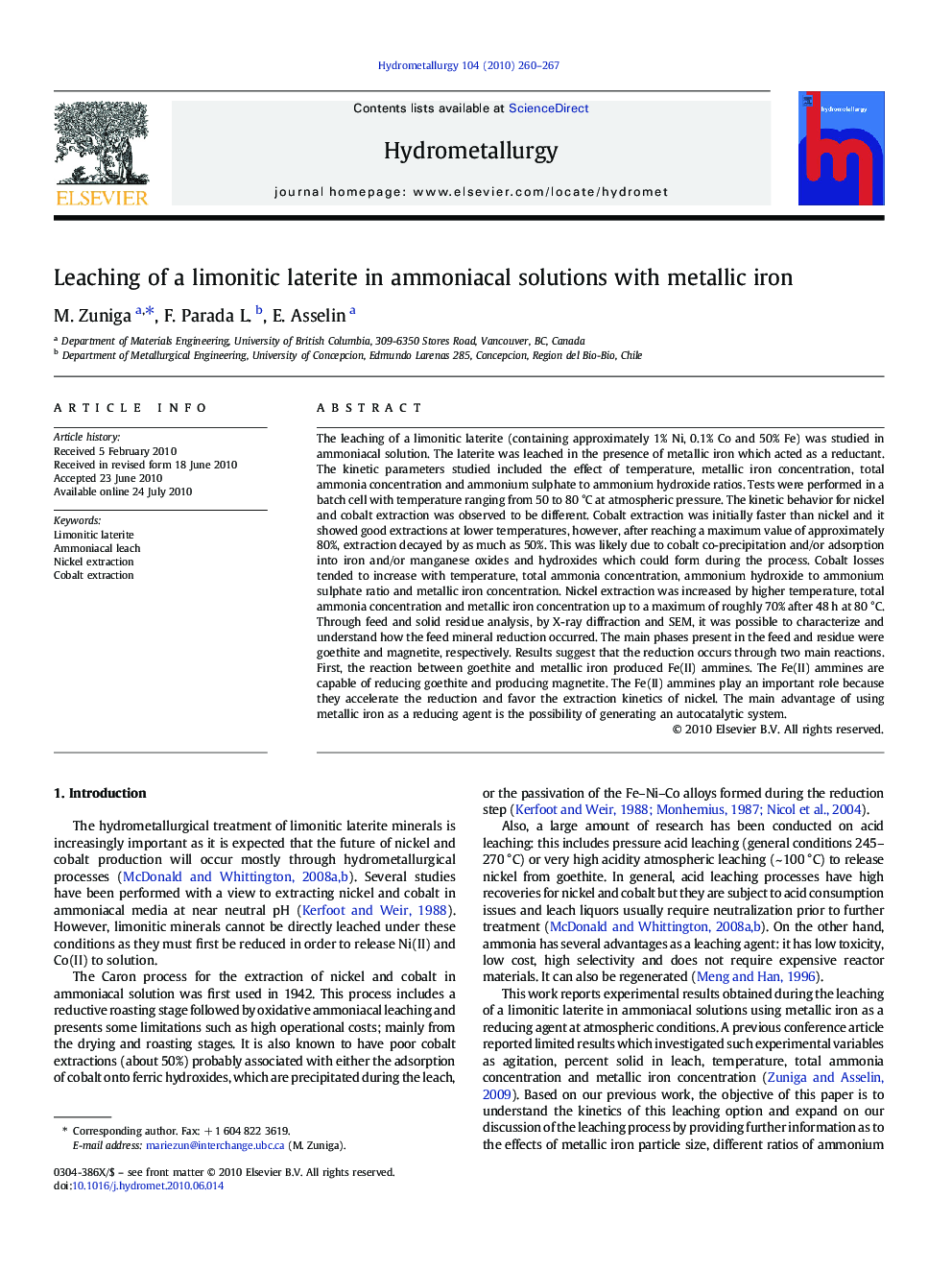| کد مقاله | کد نشریه | سال انتشار | مقاله انگلیسی | نسخه تمام متن |
|---|---|---|---|---|
| 212839 | 462069 | 2010 | 8 صفحه PDF | دانلود رایگان |

The leaching of a limonitic laterite (containing approximately 1% Ni, 0.1% Co and 50% Fe) was studied in ammoniacal solution. The laterite was leached in the presence of metallic iron which acted as a reductant. The kinetic parameters studied included the effect of temperature, metallic iron concentration, total ammonia concentration and ammonium sulphate to ammonium hydroxide ratios. Tests were performed in a batch cell with temperature ranging from 50 to 80 °C at atmospheric pressure. The kinetic behavior for nickel and cobalt extraction was observed to be different. Cobalt extraction was initially faster than nickel and it showed good extractions at lower temperatures, however, after reaching a maximum value of approximately 80%, extraction decayed by as much as 50%. This was likely due to cobalt co-precipitation and/or adsorption into iron and/or manganese oxides and hydroxides which could form during the process. Cobalt losses tended to increase with temperature, total ammonia concentration, ammonium hydroxide to ammonium sulphate ratio and metallic iron concentration. Nickel extraction was increased by higher temperature, total ammonia concentration and metallic iron concentration up to a maximum of roughly 70% after 48 h at 80 °C.Through feed and solid residue analysis, by X-ray diffraction and SEM, it was possible to characterize and understand how the feed mineral reduction occurred. The main phases present in the feed and residue were goethite and magnetite, respectively. Results suggest that the reduction occurs through two main reactions. First, the reaction between goethite and metallic iron produced Fe(II) ammines. The Fe(II) ammines are capable of reducing goethite and producing magnetite. The Fe(II) ammines play an important role because they accelerate the reduction and favor the extraction kinetics of nickel. The main advantage of using metallic iron as a reducing agent is the possibility of generating an autocatalytic system.
Research highlights
► Limonitic laterite can be reduced using metallic Fe as a reductant in ammoniacal media under atmospheric conditions and that Ni and Co can be partially leached.
► The kinetics of Ni extraction are slow and require high: temperature, ammonia concentration and metallic Fe concentration.
► The maximum extractions were obtained under the following experimental conditions: 180% stoichiometric metallic Fe at 80 °C, 15% solid at 250 rpm, 3.8 M total NH3 (sulphate/hydroxide = 0.75 M), 7.8–8.5 pH range, during 48 h.
► The kinetics of Co extraction are faster than Ni and Co extractions reach a maximum of 80% after approximately 10 h at 80 °C.
Journal: Hydrometallurgy - Volume 104, Issue 2, September 2010, Pages 260–267